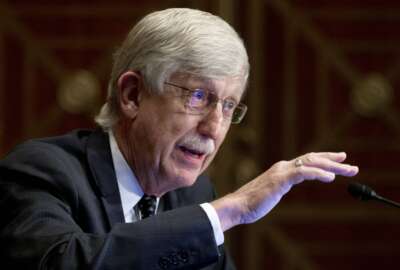Even bureaucrats learn to innovate and — often do
Sometimes fear of failure or taking on too much can scare people off from small but regular change.
Can a bureaucrat or a politician find success as an entrepreneur? Typical answer: Depends on how far you feel comfortable sticking your neck out. A better answer: Can you think flexibly within a system that seems to value process and rules?
It’s an old idea. Waves of innovation have come to the way the government operates. Establishment of the modern civil service as we know it comes to mind. The expansion of programs — still controversial — that occurred in the Franklin Roosevelt era. The programs of the Lyndon Johnson era known as the Great Society.
Over the years I’ve collected a couple of library shelves full of business and government operations books by dozens of academics. They cover management from every angle — quality control, personnel and human capital, you name it.
A few stand out. One dates to 1990. “Procurement and Public Management” by Steve Kelman, has a dull title. The subtitle tells the real story, starting with “The fear of discretion.” Kelman, then a Harvard Kennedy School professor, went on to become the director of the Office of Federal Procurement Policy for a time during the Clinton administration. One of the tenets of the Reinventing Government gambit of the Clinton years was that procurement had become too risk averse, to the point of sclerosis.
One big idea of reform then was that even within the seemingly rigid system under the Federal Aquisition Regulation, contracting officers had way more discretion than courage to use it. Tools like rapid down-select, oral presentations, market research that included actually talking with industry, RFQs about results insteady of specifications, even best value (and not lowest price) buys — they’d all gotten buried in the bottom of the tool box.
A new Harvard-nik book, by business school prof Mitchell Weiss, is also actually interesting. His “We The Possibility” was given to attendees, including me, at the ACTIAC’s Imagination Nation conference earlier this week in the chocolate manufacturing capital known as Hershey, Pennsylvania. Weiss also spoke there. His big idea also has do with discretion.
Weiss likes to tell the story of the Boston city government in the immediate aftermath of the 2013 Boston Marathon bombing. Then-Mayor (and legendary) Tom Menino felt that the existing charity institutions would be too slow in getting funds to people affected. Weiss, then Menino’s chief of staff, help set up a fund called One Fund Boston. A city government program, One Fund Boston raised and distributed millions with weeks. The bombing occured on Apr. 15. By July 4, Weiss said, the city charity had distributed $60 million to some 75 bombing victims.
The point is the government initiated something new, was able to scale it, and showed results. Weiss said too often, government people don’t let themselves try things. Because government gambits sometimes fail. He used the hot stove parable. Once a cat singes its paws jumping onto a hot stove, it will never jump onto a stove again — hot or cold. And government has had its share of hot stoves. Remember the Car Allowance Rebate System (CARS)? It burned through taxpayer dollars all right, but the complicated and error-fraught program produced dubious public good.
Failure of a program shouldn’t scare people from trying, is the basic message Weiss is conveying.
The Boston charity had an easy-to-state purpose and mission. Raise money from the public (not the city coffers), and give it to people harmed by a specific event. CARS was grandiosely designed to help global warming and stimulate the economy. Enabled by an act of Congress, it drew in owers of certain cars, car dealers, scrappage outfits and components of the Department of Transportation (DOT). It was encrusted with rules and criteria, and in certain respects went against the economic interests of some of the parties. It didn’t scale well and it lacked clarity of purpose.
CARS sprang from the hubris of Congress, no doubt fed by zealous staffers and DOT dreamers. Often thinking small and incrementally can move things more profoundly and more permanently. Case in point: A small bureau at the IRS known as the Enterprise Digitization and Case Management Office. Director Harrison Smith is using a great deal of discretion and independent thinking. He told the Hershey audience of his office’s strict criteria for starting a project and for scrapping it before it becomes a rathole of effort and money.
For three projects, the digitizers have 14 development contracts out for vendors to come up with ideas. The pilot contracts were awarded in less than a month, Smith said, using FAR Part 13.5. So there. The IRS does not have other transaction uthority, like the Defense Department or NASA, to buy prototypes. Yet it managed to award regular contracts just as fast as if it did. This type of thinking is enabling the IRS to chip away at its still-large paper processing in a way that will improve customer service.
Smith’s office exemplifies what Weiss preaches. Imagine things, try them, go incrementally to contain risk, and scale when they work. So why don’t more people do it?
Nearly Useless Factoid
By Alazar Moges
Despite the name “funny bone,” the area of your elbow that causes discomfort when it is hit isn’t a bone at all but actually a nerve. The sensitive ulnar nerve, when pushed against the bone in the elbow, sends the sharp, shock-like pain and an odd numbness you feel down your limb.
Source: Live Science
Copyright © 2024 Federal News Network. All rights reserved. This website is not intended for users located within the European Economic Area.
Tom Temin is host of the Federal Drive and has been providing insight on federal technology and management issues for more than 30 years.
Follow @tteminWFED






